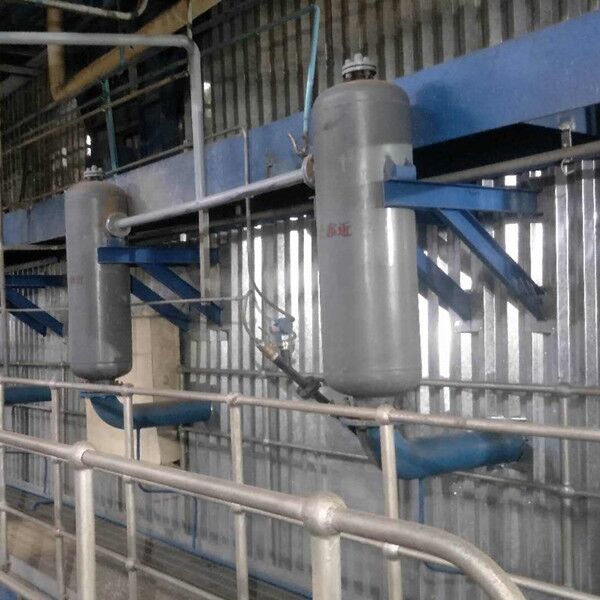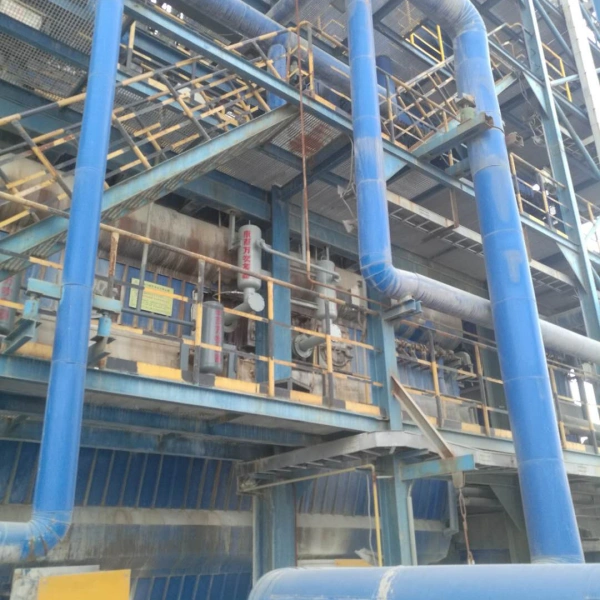Shock wave soot blower
Function
Shock wave soot blower is an innovative and effective cleaning technology by gas explosion to remove soot deposits on boiler tubes. It is widely used for power plant fired by biomass/coal/gas/oil, waste incineration plant or waste heat recovery boiler in cement plant, paper mill, sugar mill, metallurgy plant, etc.
Problem with Boiler Soot Deposit
Boilers fired by fossil or biomass fuel in power plant always have problem caused by soot accumulation on tubes. After combustion of fuel, boiler ash in flue gas would settle down on tubes. The same problem also happens for waste heat boiler in paper mill, sugar mill, cement plant, metallurgy industry, etc. For WtE boiler, this problem is worse because combustion of solid derived fuel produces higher ash content in flue gas. Soot deposition has a thermal conductivity of only 0.0581-0.116w/m2*℃, while boiler tubes have 46.5-58.1w/m2*℃. Soot accumulated on the surface of heating surface (evaporator, superheater, economizer, air preheater) would cause higher flue gas temperature, lower boiler output, more heat loss, tube erosion and leakage, unplanned shutdown, etc.
Soot Cleaning Methods
Over the past decades, power industry is fighting against ash buildup by regular boiler cleaning. Various soot cleaning technologies are utilized to manage the problem, but the theory behind the act of cleaning changes little. The methods include rapping system, manual shaking, explosion blasting, steam soot blowing, etc. New soot cleaning methods occur in later days. Water canon, which uses higher pressure water, clean the tube by washing. Sonic horn, an acoustic cleaning system, could remove soot by low frequency sound wave.
Shock wave soot blower is a breakthrough in boiler soot cleaning technology. It generates shock wave by fuel gas explosion, so it is also called explosion cleaning system. Steam soot blower is traditional wet cleaning method, while shock wave cleaning is dry method with higher cleaning force.
Fuel Gas
Shock wave pulse is generated by detonation of fuel gas mixed with air. The process happens within 10 milliseconds and generates pressure wave up to 0.8Mpa. Only when fuel gas is mixed with air at proper ratio, the combustion could happen rapidly. Due to wide flammable range, easy availability on market, cheap price, acetylene is chosen as fuel gas for detonation cleaning system.
2C2H2 + 5O2 = 2H2O + 4CO2+ Q
From the equation, we can know that acetylene changes into carbon dioxide and water during combustion, and gives out heat.
Working Principle
Decompressed acetylene gas and ambient air goes through pipeline and gets mixed together in combustion chamber. High energy ignitor put them on fire. A combination of shock wave, sonic wave and thermal cleaning effect generated by the detonation puts shock pulse onto soot accumulation on tube surface. Soot deposits are loosened and fall down to bottom silo.
Components
Shock wave cleaning system mainly consist of control part and mechanical part. Control part includes flow meter, control panel, ignitor, thermometer, cable, switch, etc. Mechanical part includes acetylene cylinder, pressure gauge, filter, mixer, damper, combustion chamber, pipeline, valve, etc.
Filter: it is installed on the acetylene pipeline to purify the fuel gas to avoid blocking in solenoid valve and mixer.
Combustion chamber: it keeps mixed gas in turbulent status to achieve detonation.
Mixer: to mix fuel gas and air in proper proportion.
Flashback arrestor: it is installed at the outlet of acetylene cylinder for protection purpose.
Damper: to protect pressure gauge, flow meter, valve from instant high pressure airflow.
This is a video for better understanding: https://youtu.be/feeI7atVYZ8
Installation
Nozzle of soot cleaning system should keep a distance from heating surface of 300-350mm. Close distance would result in smaller cleaning area, while far distance would result in unsatisfied cleaning performance. In principle, the direction of shock wave from nozzle should be the same direction with flue gas, so the removed soot could be taken away by the flue gas.
Features
- Fully automated control, PLC program
- Minimum to no maintenance
- Low operation cost
- Prevention soot accumulation and slagging on boiler tubes
- Eliminate tube corrosion
- Effective cleaning performance with sticky soot
Cleaning Performance

